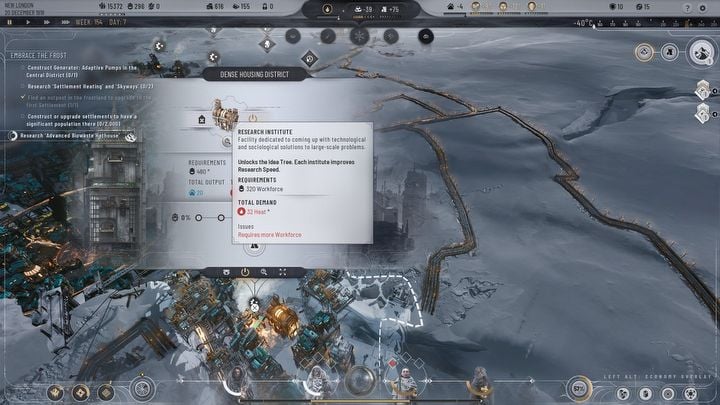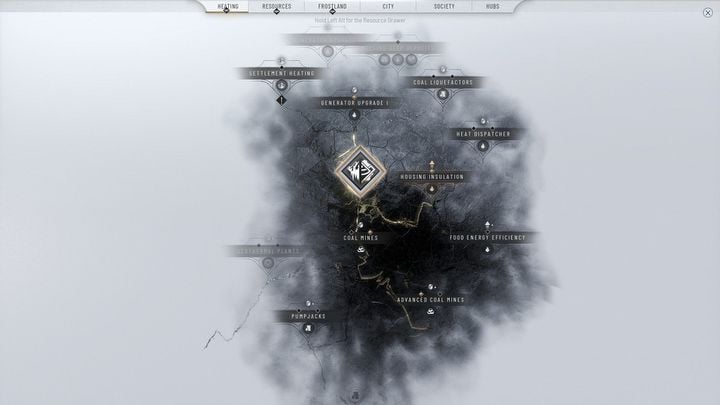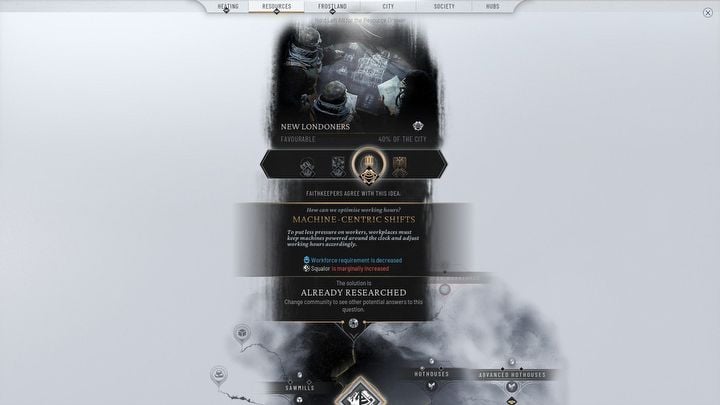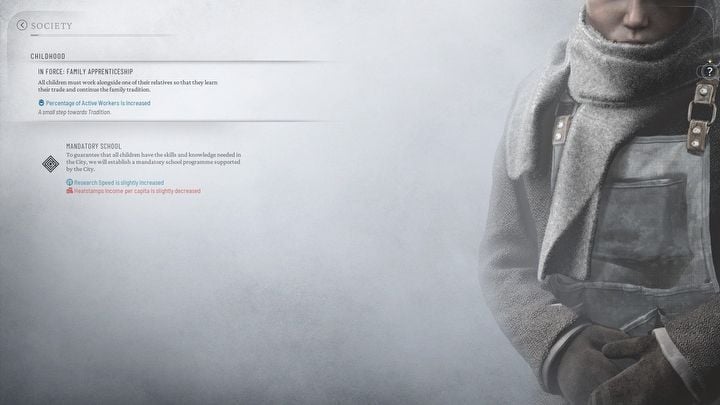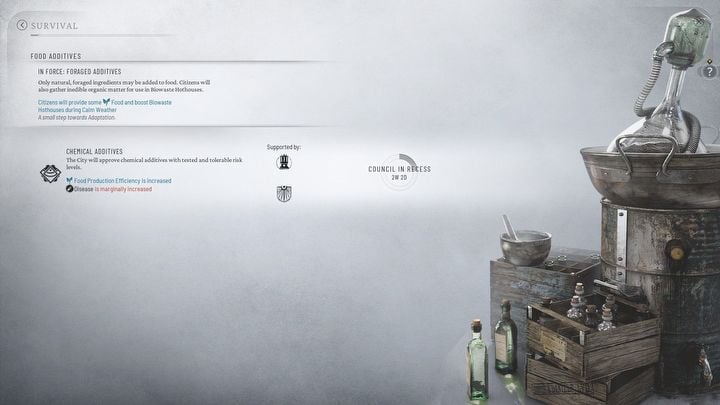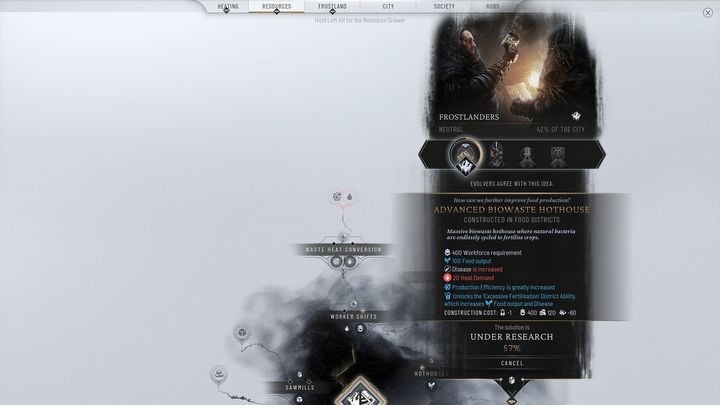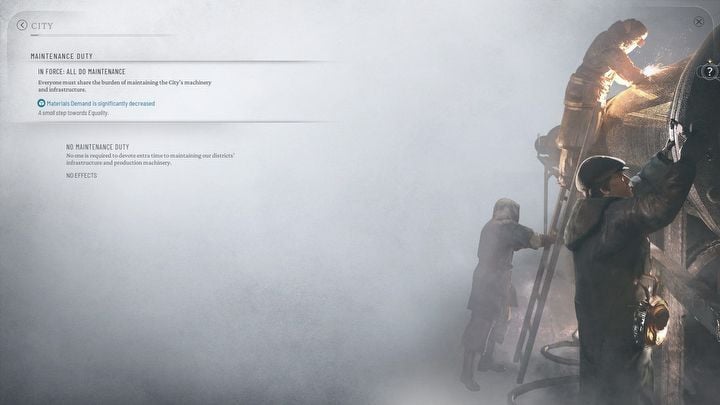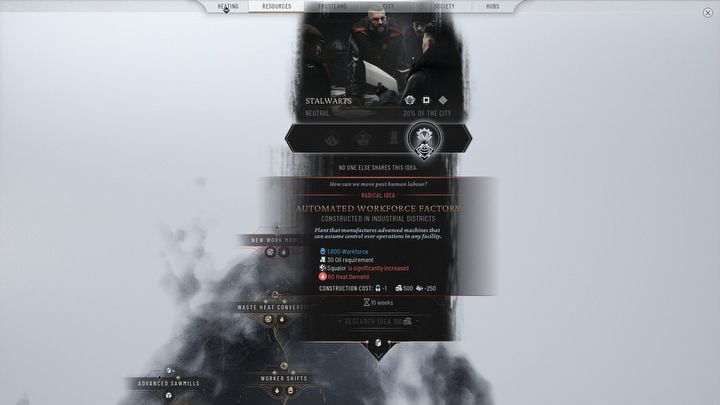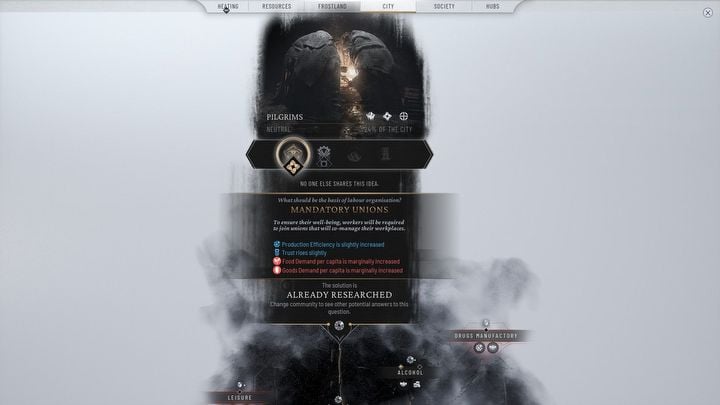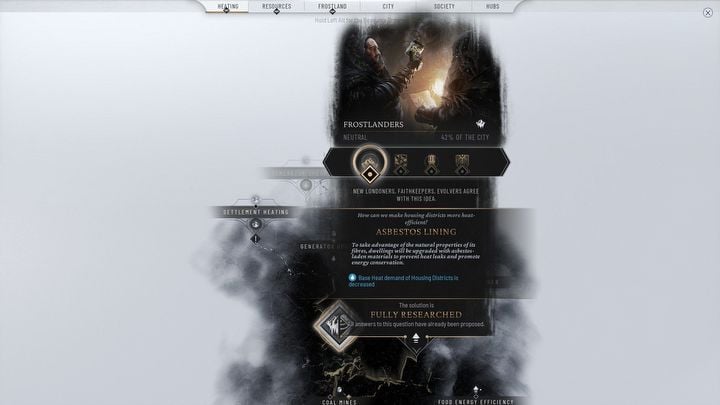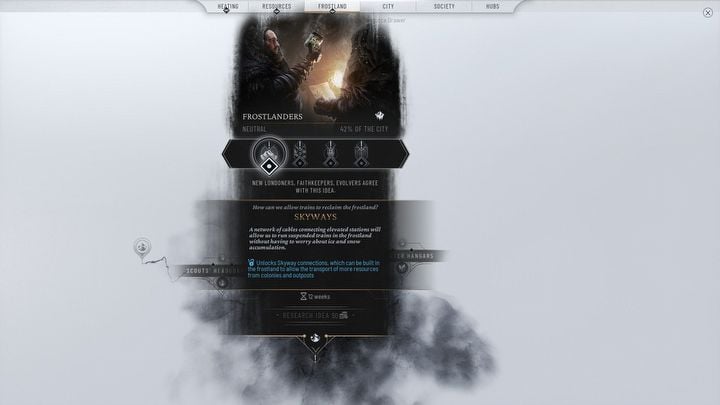Frostpunk 2: Best laws and ideas
The implementation of laws and unlocking of ideas is one of the basic pillars of gameplay in Frostpunk 2. On this page of the guide, we will present you with a list of the most interesting laws and discoveries to use during the gameplay.
The laws and technologies researched on the Idea Tree are the basic tools used to manage the development of the city in Frostpunk 2. On this page of the guide we have collected a list of the most useful and best of them. Thanks to our tips, you will be able to invest in the most necessary elements right from the start of the game.
- What is the Idea Tree?
- Worker Shifts: Machine-Centric Shifts
- Childhood: Family Apprenticeships
- Food Additives
- Hothouses
- Maintenance Duties: All Do Maintenance
- Automated Workforce
- Labour organization: Mandatory Unions
- Asbestos Lining and Crop Selection
- Skyways and Freight Docks
What is the Idea Tree?
The Council and enacting laws have already been discussed on a separate page of our guide, so here we will focus on the Idea Tree, which is strongly related to the politics mechanics.
To gain access to the Idea Tree, it will be necessary to build a Research Institute (you can read more about this building on the page How to build a Research Institute?). Once construction is complete, the Idea Tree icon will appear in the lower right corner of the screen. With its help, you will be transferred to a separate screen divided into 6 tabs:
- Heating;
- Resources;
- Frostland;
- City;
- Society;
- Hubs.
In each of them, you will find a number of branching concepts, which you can research. Conducting research is not free and takes time, during which you cannot take any other actions on the Tree. Completing the study will unlock some kind of improvement for you, e.g.:
- A new law to be voted through by the council;
- A new building to be constructed;
- Instant improvement implemented automatically.
Notice how the radiating branches of the Idea Tree force you to explore basic concepts before moving on to more advanced ones.
Worker Shifts: Machine-Centric Shifts
Introducing machines into the factories will decrease the demand for labour in the city, which is very beneficial especially at the beginning of the game, when the small settlement will be struggling with the problem of insufficient workforce. The price for this privilege is a slight increase in squialor, but this is rarely a problem at the beginning of the game, and in the later stages there are ways to deal with pollution and infrastructure destruction (more on this can be found on the How to reduce squalor? page).
Before enacting machine-centric shifts, it will be necessary to first research the idea. You will find it in the Resources tab on the Idea Tree.
Childhood: Family Apprenticeships
Another way to increase the number of people actively working is to send children to compulsory vocational training. You can do this by passing the Family Apprecenticeships law in the Society tab. Once the percentage of people capable to work stabilizes, you may consider changing the current law to Mandatory School, which will increase the speed of research.
Food Additives
Stabilizing food production may be a major problem for a developing city may. Early on in the game, propose one of the two laws related to diversifying the diet of your citizens. In principle, both options, Chemical and Foraged, are quite good and should result in a quick improvement of your food supplies. When making this decision, take into account how exactly you want to develop your city.
Hothouses
Hothouses are an additional way to cope with food shortages. You will find them in the Resources tab on the Idea Tree. These special buildings can be placed directly in the Food Districts, which will allow you to produce significantly larger amounts of food in the same area. The decision between a biowaste and a chemical hothouse must be made by you based on the potential side effects and city development plans.
Maintenance Duties: All Do Maintenance
If at any stage of the game you notice that you have a problem with resources shortages, consider researching the Maintenance Duty idea (in the City tab on the Idea Tree). We especially recommend All Do Maintenance, which, once introduced as law, should significantly reduce your city's demand for resources.
Automated Workforce
The radical idea from the Resources tab involves replacing some workers in factories with automated systems and allows for the construction of Automated Workforce Factories in industrial districts. This idea will be especially useful in Chapter 4 of the campaign, where breaking the ice around Winterhome quickly becomes crucial. An automated workforce allows this process to be outsourced to machines, making it the most efficient way to remove permafrost.
Labour organization: Mandatory Unions
Using the full potential of this idea and law will require some patience on your part. At first, unions will only slightly increase your trust and will further reduce productivity. However, if you provide your workers with a little more food and goods during two random events, their productivity will improve over time and exceed its initial state, providing you with two very useful bonuses.
Asbestos Lining and Crop Selection
These two ideas from the Heating tab will immediately reduce the demand for heat in housing and food districts. However, be careful, because asbestos insulation can trigger a random event in the future, which will result in an increase in diseases.
Skyways and Freight Docks
If you consider exploration a priority, then definitely invest in these two ideas from the Frostland tab. Both technologies make it much easier to transport goods across the frozen wastelands, allowing for easier decentralized production and mining.
You are not permitted to copy any image, text or info from this page. This site is not associated with and/or endorsed by the 11 bit studios or 11 bit studios. All logos and images are copyrighted by their respective owners.
Copyright © 2000 - 2025 Webedia Polska SA for gamepressure.com, unofficial game guides, walkthroughs, secrets, game tips, maps & strategies for top games.
